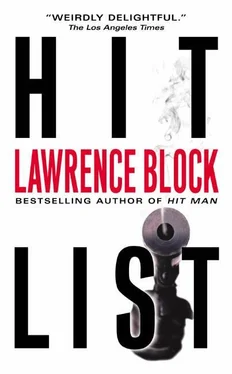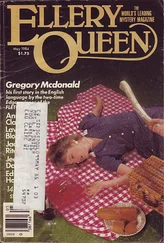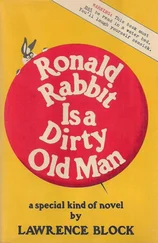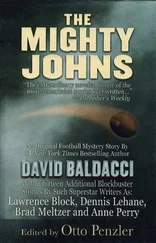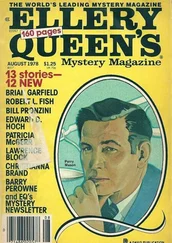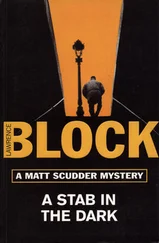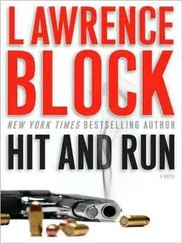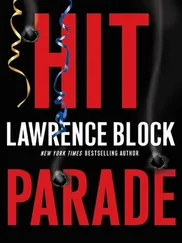“So then I thought of calling your office.”
He didn’t have an office, either. “How? I never said where I worked.”
“I was going to work my way through the Fortune 500 companies until I got you. But then you called me and saved me the trouble.”
“I guess you see me as a corporate type.”
“And why would I jump to a conclusion like that?” She put her hand on him. “Pegged you at a glance, Keller. Did you show up at the opening in basic black? Were you making a statement in paint-splattered jeans and a red bandanna? No, there you were in a suit and tie. Now where would I get the idea you were a corporate kind of guy?”
“I’m retired.”
“Aren’t you a little young for that? Or did you make such a pile of money that there’s no point in working anymore?”
“I still work once in a while.”
“Doing what?”
“Consulting.”
“Consulting for whom?”
“Corporations.”
“Bingo,” she said.
“So once in a while I have to go out of town for a few days or a week.”
“To consult.”
“Well, I’m a sort of consultant-slash-troubleshooter. And a couple of jobs a year is all I get, so it’s not that far from being completely retired.”
“And you’re all right for money.”
“I manage okay. I saved money over the years, and I inherited some, and I was lucky in my investments.”
“Doesn’t alimony and child support eat up a lot of it?”
“I’ve never been married.”
“Honestly? I know you’re not married now, I was just yanking on your chain a little, but you’ve never been married at all? How did you escape?”
“I don’t know.”
“I dragged a guy home once,” she said, “back when I was still painting ugly pictures and sleeping with strangers. He was about your age and incredibly good-looking and just sensational in bed, and he’d never been married, either. I couldn’t figure it until I found out he was a priest.”
“I’m not a priest.”
“That’s a shame. You could be a troubleshooter for God. You know something? We shouldn’t be talking like this. In the first place, I want to keep this relationship superficial.”
“Then I’d say this conversation is a step in the right direction.”
“No, it’s too personal. We can talk about things, but not about ourselves. Nothing ruins everything like getting to know each other.”
“Oh.”
“Anyway, you’re almost as cute as the priest, and even better in bed. And you’re right here, and God only knows where he is, which, when you think about it, is perfectly appropriate. But why are we wasting time talking?”
A little later he said, “I went back to that gallery today.”
“Which gallery?”
“Where we met. Regis Buell? I wanted to see how the paintings looked without wine and cheese.”
“And a few hundred people. What did you think?”
“I liked them,” he said. “The man can paint the daylights out of a tree. But they’re not exactly flying off the walls. I only spotted two paintings with red dots.”
“That’s two more than Declan would prefer.”
“How’s that?”
“Well, all I know is what people are saying. It seems he called several people who’ve been collecting his work, and a few museum officials who’ve shown an interest, and he told them all the same thing. Come to the show, have a look at what I’ve been doing lately, but for God’s sake don’t buy anything.”
“Why?”
“Because Declan can’t stand Regis Buell.”
“The gallery owner? Then why doesn’t he show his paintings somewhere else?”
“He’s going to, now that he’s out from under his contract with Regis. This is his last show there, and as of the first of the month he’ll be represented by Ottinger Galleries. So Declan wants everybody to wait, so that Jimmy Ottinger gets the commission on his work and not Regis Buell.”
“Will the prices be the same at Ottinger?”
“Jimmy may nudge them up a notch or so,” she said. “If he thinks the traffic will bear it. He thinks a great deal of Declan’s work.”
“And Regis Buell doesn’t?”
“What Regis knows is that this is his last chance to make money off Declan’s work. So he’d want to keep prices low enough to make the maximum number of sales. Jimmy Ottinger can afford to think long-term. It may be better to establish a higher price for the artist now than to sell everything at a lower level.”
“I guess it’s all more complicated than it looks.”
“Like everything else,” she agreed. “And what about you? Why the interest? Are you thinking of investing in one of Declan’s mighty oaks?”
“There are a few that might work in my apartment,” he said. “One in particular, but don’t ask me to describe it.”
“A tree is a tree is a tree.”
“This is an old one, and it’s a winter setting, but that fits quite a few of them. The thing is they’re all different, but when you describe them the descriptions all come out the same.”
“I know. Listen, don’t tell Declan I said this, but what do you care who gets the commission? If you’ve found one you really love, and if you’re sure you’ll still want to look at it a month or a year from now…”
“Buy it?”
“You’ll never get it cheaper. And somebody else might buy it out from under you.”
Around one-fifteen, Maggie walked him to the door and stood on her tiptoes to give him a kiss. “No more flowers,” she cautioned him. “Once was perfect, but once is enough. Call me every now and then, say once a week, and we’ll get together like this for an hour or two.”
“A couple of hours,” he said. “Every week or so.”
“Is that too much?” She patted his cheek. “More often than that and we might wear it out.”
More often than that, he thought, as the cab carried him home, and we might wear me out.
At home, he paged through one of his stamp albums. Many of his fellow hobbyists were topical or thematic philatelists, collecting stamps not of a particular country or time period but united by what they portrayed. Stamps showing trains, say, or butterflies, or penguins. A doctor might choose stamps with a medical connection, while a musician could seek out stamps showing musical instruments, or those with portraits of the great composers. Or you could collect rabbit stamps for no more abiding reason than that you just plain liked to look at rabbits.
Art on stamps was an increasingly popular topic. Early on, when postage stamps were commonly of a single color, reproducing a great painting on a scrap of paper was easier said than done. A monochromatic miniature of the Mona Lisa might be recognizable for what it was, but it lacked a certain something.
Those early stamps, skillfully engraved and beautifully printed, were to Keller’s mind far more attractive than what they turned out these days, when virtually every stamp from every country was printed in full color, and any stamp-issuing entity could spew out gemlike reproductions of the world’s art treasures. Collectors made such endeavors profitable, and, unlike animation art from Disney or Warner Brothers, the works of Rembrandt and Rubens were unprotected by trademark or copyright. Anyone could copy them, and many did.
Keller’s 1952 cutoff date put most of the world’s art stamps out of his reach. But some countries had issued such stamps back in the old one-color days, more out of pride in their artistic heritage than in a grab for the collector’s dollar. The French were particularly eager to show off their culture, portraying writers and painters and composers at the slightest provocation, and Keller looked now at a set of French semipostals that gave you a real sense of the artists’ power.
Читать дальше
